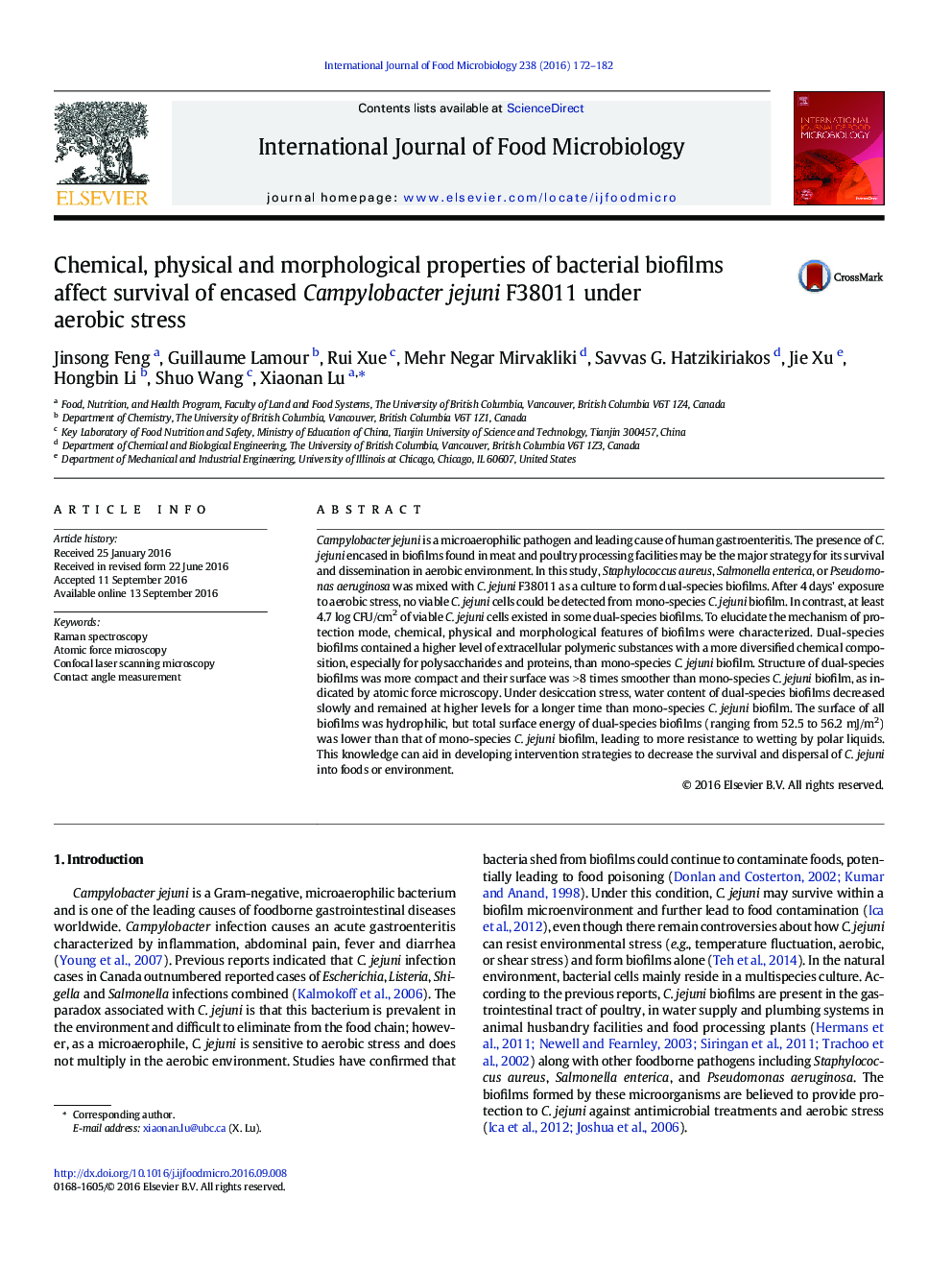| کد مقاله | کد نشریه | سال انتشار | مقاله انگلیسی | نسخه تمام متن |
|---|---|---|---|---|
| 4366131 | 1616545 | 2016 | 11 صفحه PDF | دانلود رایگان |

• C. jejuni-containing biofilms were characterized from chemical, physical and morphological perspectives.
• The influence of bacterial communities to the characteristics of biofilms was observed.
• Transition of C. jejuni survival state in a biofilm under aerobic stress was observed.
• The protection from mono- and dual-species biofilms to encased C. jejuni cells was evaluated.
• Dominant strain in dual-species biofilms was identified.
Campylobacter jejuni is a microaerophilic pathogen and leading cause of human gastroenteritis. The presence of C. jejuni encased in biofilms found in meat and poultry processing facilities may be the major strategy for its survival and dissemination in aerobic environment. In this study, Staphylococcus aureus, Salmonella enterica, or Pseudomonas aeruginosa was mixed with C. jejuni F38011 as a culture to form dual-species biofilms. After 4 days' exposure to aerobic stress, no viable C. jejuni cells could be detected from mono-species C. jejuni biofilm. In contrast, at least 4.7 log CFU/cm2 of viable C. jejuni cells existed in some dual-species biofilms. To elucidate the mechanism of protection mode, chemical, physical and morphological features of biofilms were characterized. Dual-species biofilms contained a higher level of extracellular polymeric substances with a more diversified chemical composition, especially for polysaccharides and proteins, than mono-species C. jejuni biofilm. Structure of dual-species biofilms was more compact and their surface was > 8 times smoother than mono-species C. jejuni biofilm, as indicated by atomic force microscopy. Under desiccation stress, water content of dual-species biofilms decreased slowly and remained at higher levels for a longer time than mono-species C. jejuni biofilm. The surface of all biofilms was hydrophilic, but total surface energy of dual-species biofilms (ranging from 52.5 to 56.2 mJ/m2) was lower than that of mono-species C. jejuni biofilm, leading to more resistance to wetting by polar liquids. This knowledge can aid in developing intervention strategies to decrease the survival and dispersal of C. jejuni into foods or environment.
Journal: International Journal of Food Microbiology - Volume 238, 5 December 2016, Pages 172–182